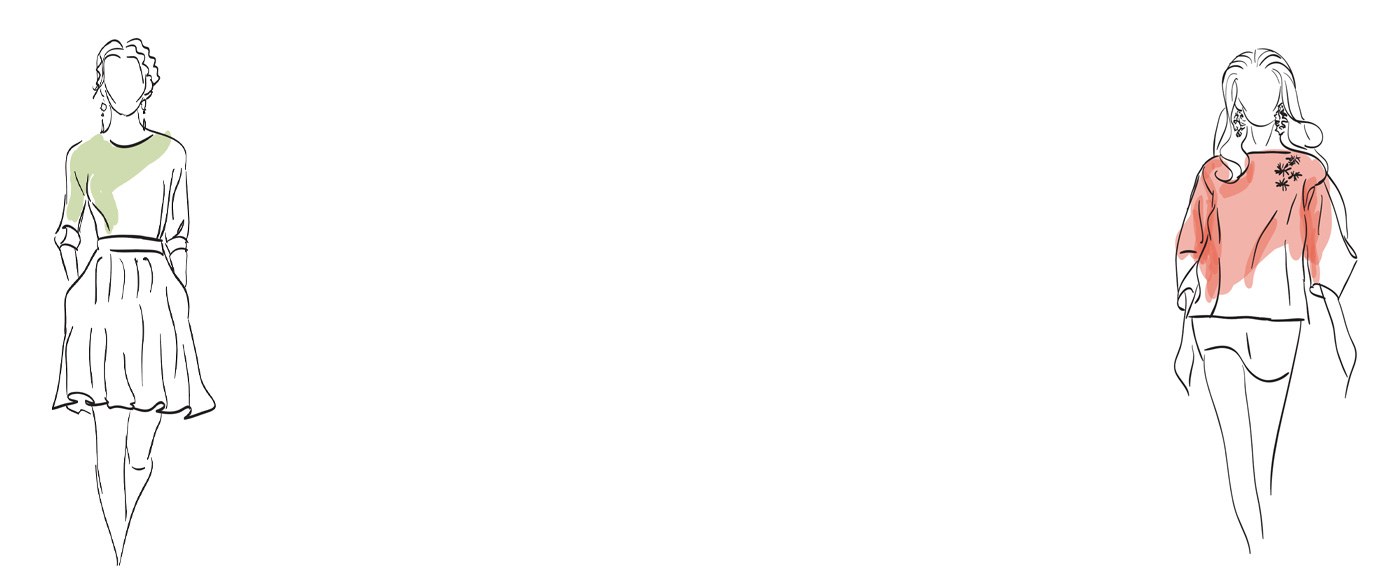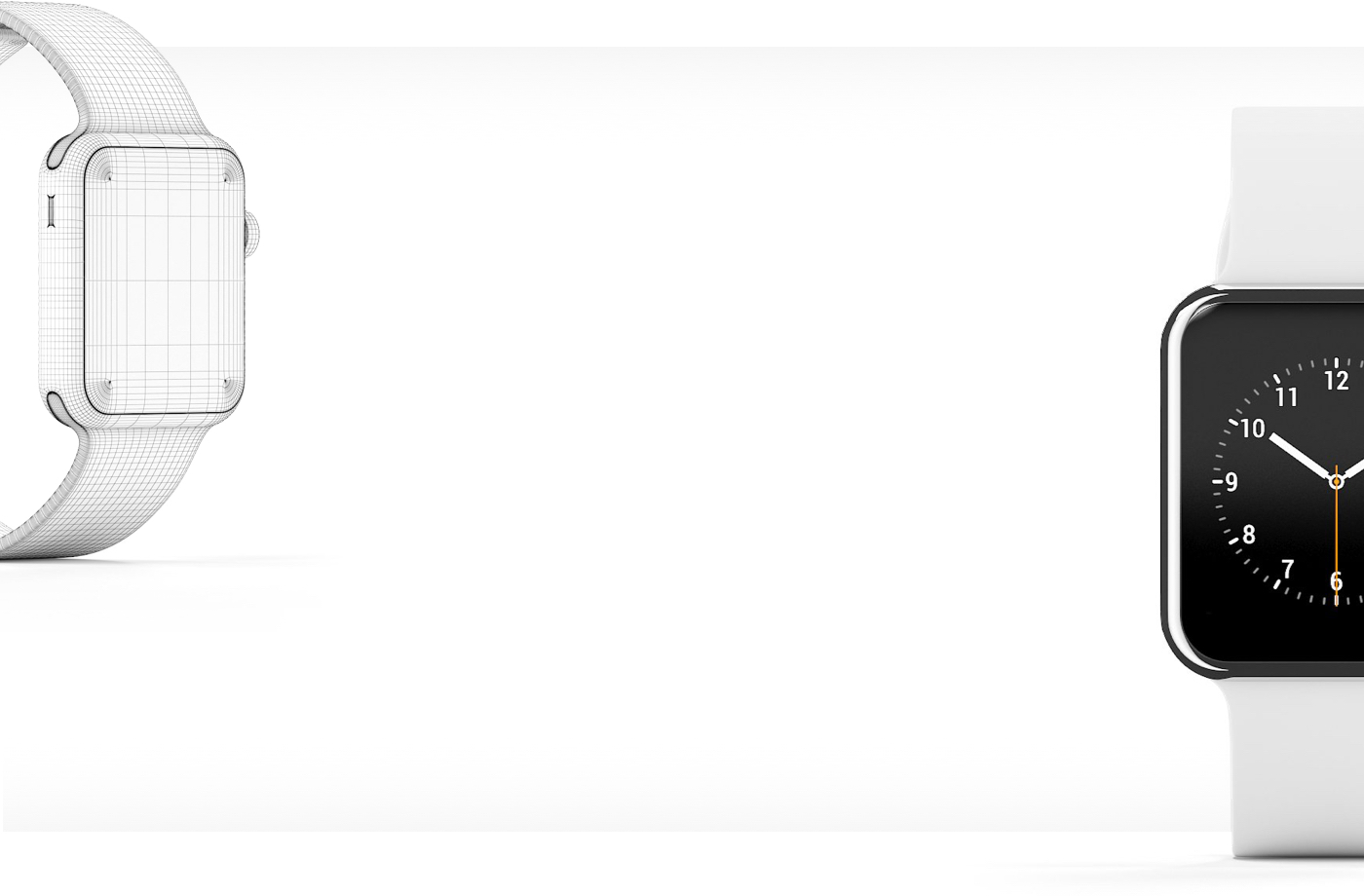



디자인에 대한 열정을 직업으로 삼기로 결심하는 것은 취업 시장이 얼마나 치열한지 고려했을 때, 더욱 위압감을 느끼실 것입니다. 하지만 비슷한 생각을 가진 전문가들과 함께, 창의적으로 자신을 표현할 수 있는 기회는
충분히 탐색할 만한 가치가 있습니다. 여러분이 신입 패션 디자이너이든, 인테리어에 대한 예리한 안목이 있거나, 3D에 열광하는 사람이든, 계속해서 읽어보시길 바랍니다.
당신의 디자인 경력 발전과 디자인 분야에서 우위를 점할 수 있는 방법을 알려드리겠습니다.

잡지를 위한 멋진 페이지를 편집하든 주요 브랜드를 위한 시각적으로 시선을 사로잡는 광고를 제작하는 것이든, 그래픽 디자인은 가장 멋진 창작 작업 중 하나입니다. 또한, 결과적으로, 가장 시작하기 어려운 것 중 하나이기도 합니다. 그러나 미루지 말고 여러분의 재능이 빛날 수 있게 하십시오.
자격증은 필수이지만, 그렇다고 해서 반드시 3년제 학위를 따야 하는 것은 아닙니다. 다른 집중적이고 짧은 기간의 방법을 통해 신속하게 준비할 수 있으며 경우에 따라 3개월 이내에 직장에 출근할 수 있습니다. 단기 온라인 코스에서는 디자인 원칙과 소프트웨어 기본을 배울 수 있습니다.
여러분만의 로고를 포함한 온라인 포트폴리오를 만드십시오. 기술을 연마하고 장래의 고용주에게 보여줄 수 있는, 일련의 작업물을 만들어 볼 수 있는 봉사 활동을 찾아 보는 것도 좋습니다.
디지털 포트폴리오와 자격을 갖춘 상태에서, 다음 단계는 가치 있는 업무 경험을 탐색하는 것입니다. 주요 디자인 및 크리에이티브 대행사는 인턴십을 제공하지만 소규모 회사에서 귀중한 일선 경험 제공과 업무개선에 도움을 받을 수 있는지 알아보는 것도 좋습니다.

고급 패션 하우스를 위한 오뜨 꾸뛰르 제품을 만드는 꿈을 가지든 스포츠 웨어에 대한 열정을 갖고 있든, 일반적으로 패션 디자인 분야에 진출하려면 취업 전에 정규 수업을 수강해야 합니다. 더 짧은 1년 기간에 핵심 기술을 배울 수 있는 수업도 있습니다. 또는 취업을 위해 더 긴 학위 과정을 수강할 수 있습니다.
공부는 여러분에게 견고한 기반을 제공할 것이지만, 직업을 얻는 데 도움이 되는 것은 여러분 자신과 자신의
일을 투영하는 방식입니다. 학위를 마친 후에도 인턴십은 정규직으로 전환될 수 있는 가장 일반적인 경로이지만, 고용주의 눈에 띄려면 함께 일하고 싶은 회사와 관련된 디자인과 아이디어로 코스 포트폴리오를 보완해야 합니다. 주요 하이 스트리트 브랜드는 인턴십을 제공하지만 소규모 회사도 내부에서 배울 수 있는 기회를 제공하고 있습니다. LinkedIn에는 수십 개의 신입사원 모집 광고가 올라와 있습니다.
유행에 대한 지식과 여러분의 디자인이 미래에 판매될 곳을 잘 알고 있는지 확인하십시오. 패션 산업은 의상 자체만큼이나 디자이너에게 중요합니다. 그리고 마음에 드는 작업을 하는 디자이너가 있다면 연락해서 미팅을 신청하십시오. 직접적인 만남이나 전화 통화는 아직 남들에게 알려지지 않은 업무의 기회로 이어질 수 있는 개인적인 연을 만들 수 있습니다.

제품 디자인은 제품 자체를 디자인하는 것뿐만 아니라 문제도 해결하는 것입니다. 이는 재료 및 공학에 대해 배우고 창의적인 방법을 개발하는 것을 의미합니다. 편리하게도 개인 취향에 따라 가능한 견습 제도 또는 학위 과정 같은 다양한 제품 디자인 입문 경로가 있습니다.
후자는 직장 생활을 1년 동안 겸하는 경우가 많습니다. 즉, 디자이너와 긴밀히 협력할 수 있으며, 디자이너가 기획서에서 어떻게 개념을 취하여 모양을 갖춘 제품으로 만드는지 배울 수 있으며, 매일 스튜디오에서 사용되는 소프트웨어와 제품을 이해하는 데 도움이 될 수 있습니다.
창조 산업의 다른 분야와 마찬가지로 인턴십은 열정적인 학생에서 직원으로 취직하는 데 중요한 역할을 합니다. 대행사는 종종 졸업생들이 그들과 연락을 취할 수 있게 장려하고 인턴이나 함께 일할 기회가 있어야 하는 이유를 설명합니다.
최상의 기회를 얻기 위해 개념 설명, 초기 도면부터 완성된 물건에 이르기까지를 다룬 프로젝트와 그 프로젝트를 진행한 방법을 보여주는 간단한 포트폴리오 웹사이트를 만드십시오. 이것은 단순히 다 만들어진 제품이나 디자인을 보여주기 위한 것이 아니라 당신이 제품 디자인 이면의 과정을 이해하고 있다는 것을 보여줍니다. 웹사이트에 '특기 사항' 부문이 있는지 확인하고 사용 방법을 알고 있는 소프트웨어와 하드웨어에 대해 자세히 설명하십시오.

세세한 것보다 더 큰 그림에 관심이 있으십니까? 그렇다면 콘셉트 디자인 분야의 직업이 여러분에게 적합할 수 있습니다. 콘셉트 디자인은 초기 단계에서 큰 꿈을 꾸고 초기 단계에서 디자인을 개발하는 것입니다. 여기에서 통용되는 것은 단순히 제품을 보여주는 것이 아니라 아이디어입니다.
콘셉트 디자이너는 주요 광고 캠페인, 앱 또는 가제트의 창작을 하며, 브랜드와 제품의 새롭고 흥미로운 관점을 보여주는 콘셉트를 만듭니다. 이것은 고급 작업이므로 수 많은 경쟁자들 사이에서 눈에 띄어야 합니다.– 컨셉 디자인 석사 학위를 취득하면 경쟁이 치열한 구직 시장에서 더 많은 기회를 얻을 수 있습니다.
또는 여러분이 그래픽 또는 제품 디자인 대행사에서 자신의 기술을 전문화하여 회사의 콘셉트 디자이너와 긴밀하게 협력하여 기술을 향상시킬 수 있습니다.
콘셉트 디자인은 사람들이 특정 브랜드와 관련하여 이전에 생각해 본 적이 없는 대담한 무언가를 만드는 것이므로 평범함 속에서 눈에 띄는 독창적이고 독특한 작업을 만들어야 합니다. 잠재 고용주에게 여러분이 CAD(컴퓨터 지원 설계)의 기본을 이해하고 있고 콘셉트 디자이너의 삶을 더 쉽게 만들어 주는 와콤 타블렛과 같은 하드웨어에 대한 경험이 있다는 점을 분명히 하십시오.

일러스트레이션은 잡지, 웹 사이트, 책 및 상업적 고객을 위해 자신만의 스타일로 그림을 그릴 수 있는 기회를 제공하여 창의적인 표현을 할 수 있는 놀라운 기회를 제공합니다. 당연하게도, 이는 많은 노력이 필요합니다. 특히 많은 일러스트레이터가 프리랜서이기 때문에 진입하기 어려운 것으로 잘 알려진 업계에 진출할 수 있는 통로를 만들긴 쉽지 않을 것입니다.
일러스트레이션 학위를 위해 공부하는 것도 가능하지만 그림에 대한 열정과 세부 사항에 대한 훌륭한 안목이 있다면 자신의 존재감을 만들고 커미션을 확보하는 것이 가능합니다. 첫째, 소셜 미디어, 특히 Instagram에서 최고의 작품을 선보이도록 하십시오. 고객이 여러분의 셀카와 휴가 스냅을 보지 않고도 여러분의 작품을 볼 수 있도록 개인 이미지를 위한 별도의 계정을 만드십시오. 소셜 미디어는 또한 다른 일러스트레이터와 연결하는 좋은 방법입니다. – 상호 작용의 시작은 첫 번째 커미션으로 이어질 수 있습니다.
포트폴리오 웹사이트를 구축하시고, 일반 계정이 아닌 좋은 도메인 이름과 전문적인 이메일 주소를 가지고 있는지 확인하십시오. 디지털 일러스트레이션 도구를 사용하고 펜과 종이로 그림을 그리십시오. 그리고 자신이 있을 때, 여러분이 좋아하는 작품을 출판하는 출판사와 크리에이티브 대행사에 연락하여 회의를 요청하세요. 많은 프리랜서 일러스트레이터들은 그들이 일을 안전하게 할 수 있도록 도와줄 에이전트를 가지고 있습니다.

3D 모델링은 디자인에서 가장 빠르게 발전하고 가장 매혹적인 부분 중 하나입니다. 이 분야에서 경력을 쌓으려면 예술 학교 및 대학교의 학부 및 대학원 3D 모델링 학위 과정에서 수행할 수 있는 고도로 전문화된 기술을 배우는 데 시간을 투자해야 합니다. 하지만, 집중적인 온라인 강좌를 통해 여러분은 이를 빠르게 습득할 수 있습니다. 강력한 데스크톱 컴퓨터에서 트랙패드 및 스타일러스와 같은 오픈 소스 도구와 전용 하드웨어를 사용하는 연습도 여러분의 기술을 더 빨리 개선할 수 있습니다.
일단 도구를 익히면, 3D 영화에 대한 작업을 계속하거나, 과학 연구를 위한 모델을 만들거나, 게임을 위한 미래형 창작물을 개발하는 등의 무수한 직업 선택권이 있습니다. 특히 프리랜서로 일할 계획이라면, 전문화보다는 폭넓은 접근법을 취하라고 업계에서 일하는 사람들은 조언하고 있습니다. 이렇게 하면 작업을 확보할 때 더 많은 선택지가 제공됩니다.
채용 공고는 잠깐의 웹 검색으로 찾을 수 있습니다. 또는 많은 크리에이티브 대행사는 전문 3D 팀을 갖추는 추세에 있습니다. – 여러분의 모델을 선보일 수 있는 전문적인 품질의 웹사이트를 꼭 하나 만드십시오. 그것이 없으면 장래의 고용주는 여러분의 작품을 볼 수 없으며 다른 곳에서 봐야만 할 것입니다.

인테리어 디자인은 장식 이상의 의미를 갖습니다. 이 광범위한 기반 분야는 기업 작업실을 만드는 것에서부터 특정 유동적인 요구를 가진 고객을 위한 공간을 설계하는 데까지 모든 것을 포함할 수 있습니다.
실내 디자인 학위는 특히 대행사에서 일하기를 원하는 사람들에게 데스크톱 컴퓨터와 타블렛에서 드로잉 기술을 발전시키는 것과 마찬가지로 필수인 학위입니다. CAD(컴퓨터 지원 설계)에 능숙해지는 것도 아주 중요합니다. 어떤 과정이든 그룹과 개인이 공간을 경험하는 방법을 배우고 여러분만의 미학과 정체성을 연구하는 데 도움이 됩니다.
인턴십은 경험을 빨리 얻을 수 있는 확실한 방법입니다. 온라인상에서 구직 목록은 쉽게 구할 수 있지만 유명 대행사는 종종 공고를 냅니다. – 온라인 포트폴리오를 양호한 상태로 유지하고 모든 인터뷰에 실제 도면을 가져가셔야 합니다.
프리 랜싱은 인테리어 디자인으로 가는 주요 경로이기도 합니다만, 스스로 작업하기 전에 사내 경험을 쌓는 것이 좋습니다. 자선 단체를 위한 프로젝트는 여러분의 포트폴리오를 강화하는 좋은 방법이지만, 무료로 작업하는 데 너무 많은 시간을 할애하지 않도록 작업을 시작하기 전에 엄격한 조건을 설정하는 것이 좋습니다.
당신이 어떤 종류의 디자인 경력을 추구하길 원하든, Wacom Intuos Pro는 당신의 작품이 다른 사람들로부터 눈에 띄도록 도울 수 있습니다. 초감각적인 Wacom Pro Pen 2와 결합된, 이 세련된 태블릿은 더욱 놀랍고 고급스러워 보입니다. 그 어느 때보다 자연스럽고 창의적인 컨트롤로 당신의 상상력을 현실로 만드십시오. Wacom Intuos Pro는 주목이 필요한 디자인에 필요한 모든 것을 갖추고 있습니다.
추천 제품

Wacom Intuos Pro
응답성이 높은 패드와 펜을 사용하여 이미지를 스케치하고 그리고 편집한 후 화면에서 작품을 확인할 수 있습니다.
Wacom의 비전은 자연스러운 인터페이스 기술을 통해 사람과 기술을 더욱 가깝게 만드는 것입니다. 이를 통해 Wacom은 펜 타블렛과 액정 타블렛 뿐만 아니라 전자 펜 스타일러스와 디지털 서명을 저장 및 처리하는 디지털 서명 솔루션 분야에서 세계 최고의 제조업체로 성장했습니다. Wacom의 직관적인 입력 장치의 첨단 기술은 전 세계에서 가장 흥미로운 디지털 아트, 영화, 특수 효과, 패션 및 디자인을 창조하는 데 사용되어 왔으며 비즈니스 및 개인 사용자에게 그들의 개성을 표현할 수 있는 선도적인 인터페이스 기술을 제공합니다. 1983년에 설립된 Wacom은 일본(도쿄 증권거래소 6727)에 본사를 둔 글로벌 기업으로 전 세계에 자회사 및 계열사를 두고 150개국 이상에서 마케팅 및 유통을 지원합니다.